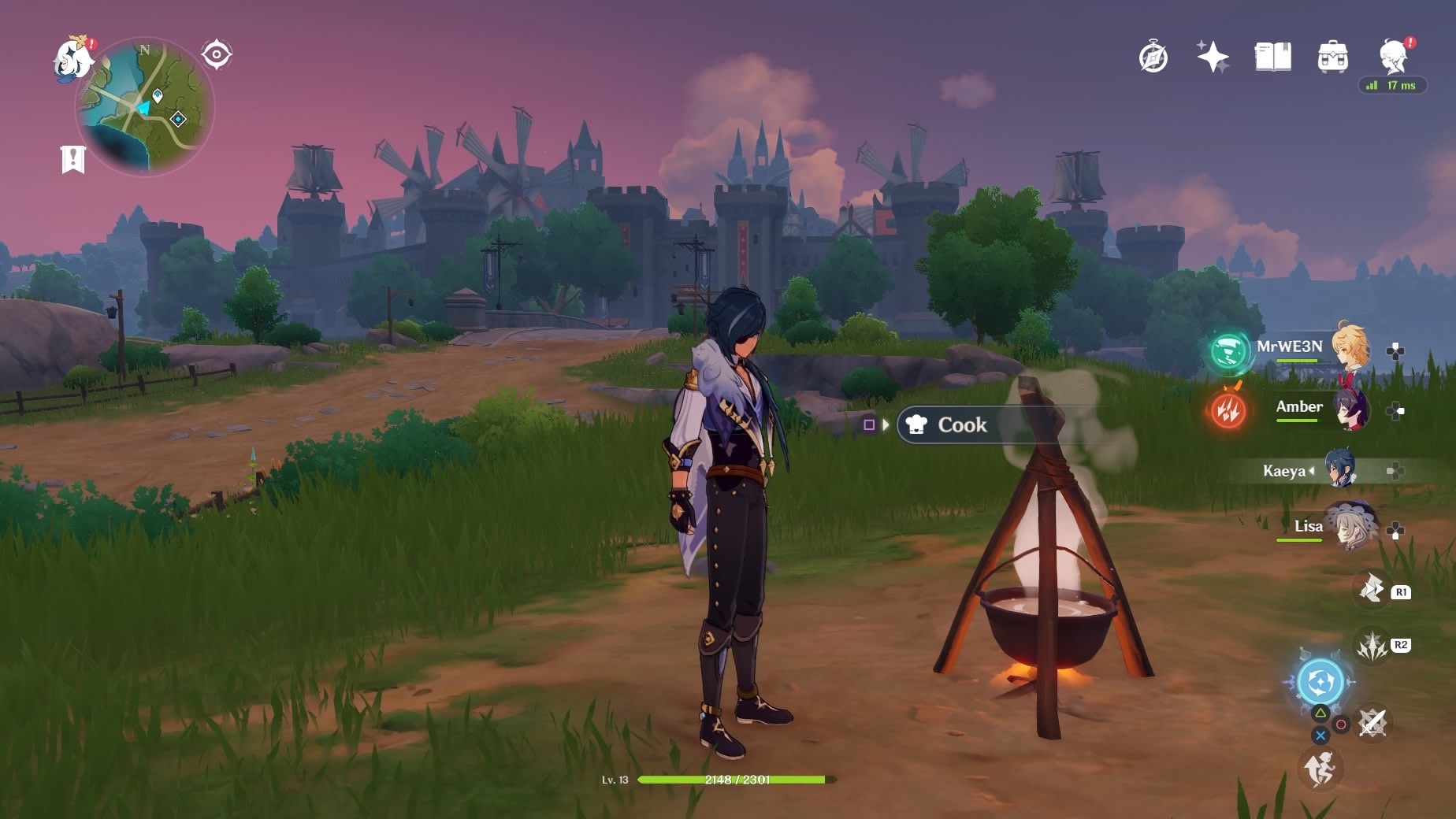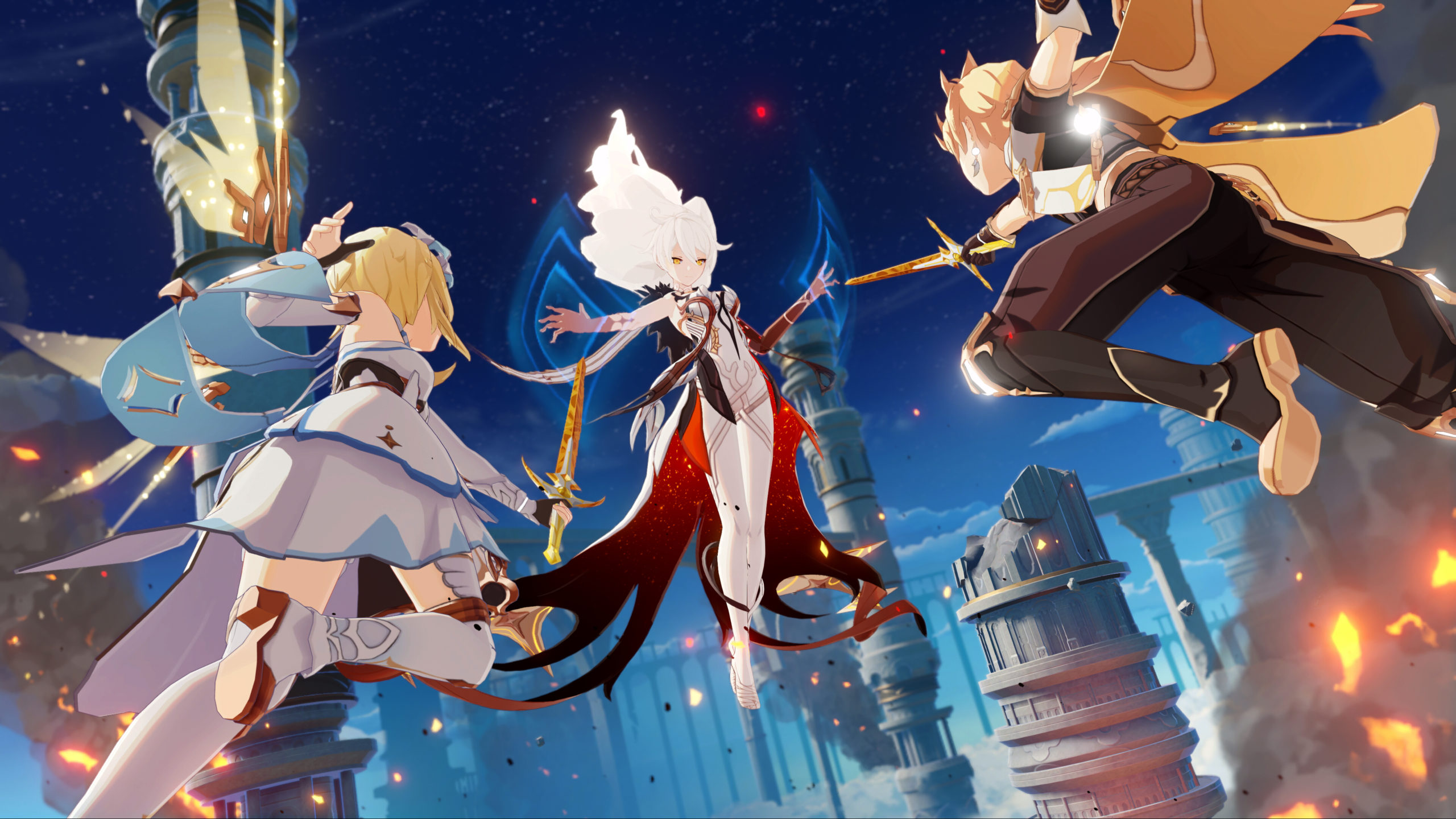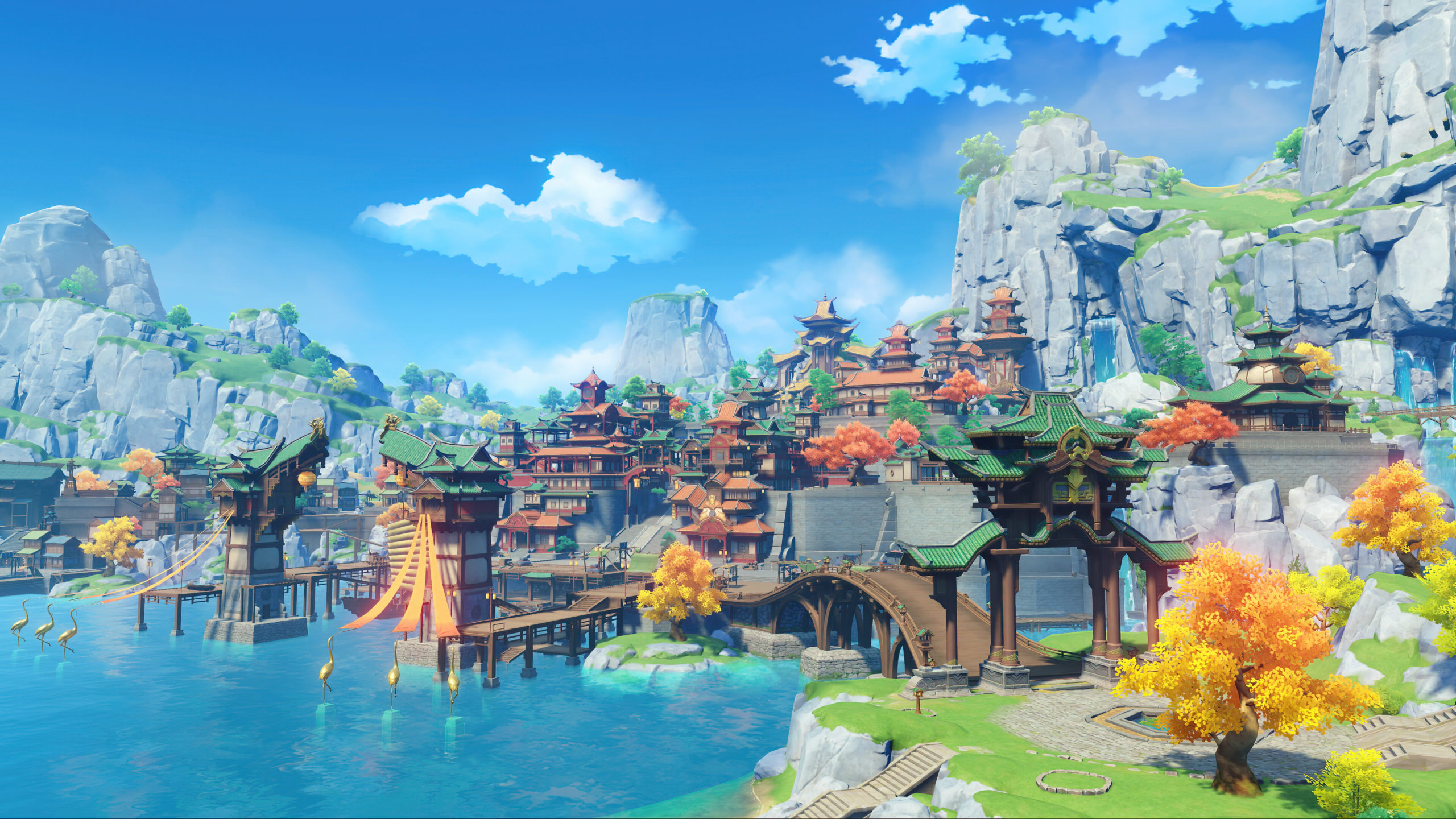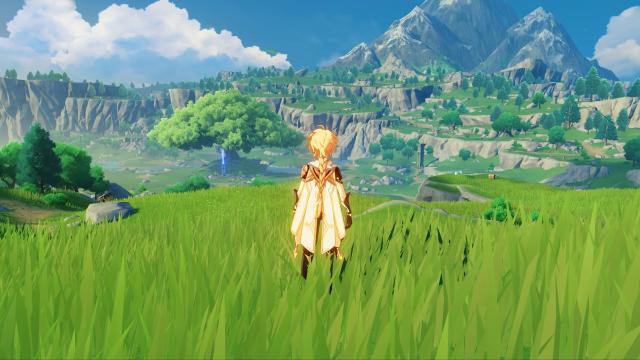There’s a lot to like about Genshin Impact, a free-to-play action-RPG that came out this week for PC, PlayStation 4, and mobile. While it might look a bit like Breath of the Wild, with its art style and mechanics, Genshin Impact stands on its own thanks to its combat, its quest and levelling systems, and, unfortunately, some of the typical bullshit that comes along with a zero-dollar price tag.
When the game’s PS4 launch was revealed, at the 2019 ChinaJoy conference, some Breath of the Wild fans allegedly smashed their PS4s in protest over just how much of a resemblance Genshin Impact bore to Nintendo’s masterpiece. In a recent interview, developer miHoYo cited Breath of the Wild as an inspiration, but described Genshin Impact as “very different.”
To be fair, there are plenty of undeniable similarities between the two games. In Genshin Impact, you can glide at any time. You can climb literally anything. You have a stamina bar shaped like a crescent moon. You fight enemies that look a whole lot like Chu Chus or Bokoblins. You can even whip up meals — which restore your health and give you other temporary bonuses — at cooking pots that look like this:

Puzzles also often require Zelda-like solutions; you might have to ignite some bramble with a flaming arrow to reach a chest, for instance. And some of the musical cues seem lifted from the Breath of the Wild OST; my roommate, a person who’s played more of that game than I’m at liberty to reveal, walked by while I was exploring a Genshin Impact dungeon and stopped in her tracks to ask, “Wait, isn’t this the music from Zelda?!”
But Genshin Impact is more than a Breath of the Wild clone. After spending the past few days messing around with it, I’ve found that Genshin Impact hasn’t scratched my Zelda itch at all. But it has, unexpectedly, abated my bones-deep need to play a new Tales game, especially after Tales of Arise was delayed from this year to an unannounced future date.
Narratively, Genshin Impact touches on all the Tales greatest hits: all-powerful deities, spunky yet moralistic military leaders, a central church with perhaps too much sway over the local community. At the start of the game, you and your sibling engage face off against a mysterious angelic being in a fight that wouldn’t be out of place in the most bonkers anime you can think of. Mid-cutscene, the game freezes, and you have to select either the female or male sibling. Whoever you don’t choose is kidnapped. But whoever you go with is marked by a god (a wind deity named Anemo) as a special individual and imbued with magical powers. From there, you’re off to find your lost sibling, and slowly amass a motley crew of unique personalities to help in your quest.

Beyond that, the game features a Tales-like 3D action-RPG combat system. Usually, you take on bandits, monsters, and other typical fantasy fare in open battle. Though the moveset isn’t as deep as it is in, say, Tales of Berseria, you can choose between regular attacks, special attacks, and super-powered “elemental bursts,” which dish out game-changing damage. You’re not ringed into an arena, as you are in many Tales games, and fights don’t start as a result of random encounters. But the way your characters swing swords and cast spells feels straight out of those games. You know how, when you pick up a Mario game, you instantly know you’re playing a Mario game? From Genshin Impact’s very first fight, I couldn’t shake the sense that I was playing a Tales game.
That said, some of Genshin Impact’s combat systems stand on their own. You can have up to four characters in your party, but only one can be on the field at any given time. By tapping different directions on the D-pad (on PS4), you can switch between them in an instant. Doing so is essential, since each character has a different elemental power, and success in combat is contingent on mixing and matching them.
For example, one of my sword-wielders is well-trained in the art of freezing people solid. I might bust him out, have him cast a frost spell, then quickly switch to my fire-slinging archer to melt anyone encased in ice. Or, if a bandit is standing in a puddle, they’ll be inflicted with the “wet” status effect, so I might summon my mage to dish out some boosted electric damage with some Zeus-ian bursts of thunder. You can technically get by with just mashing the attack and dodge buttons, but the combat doesn’t feel truly rewarding unless you learn how to juggle characters and elements in the heat of battle.
While some battles take place in the open world of Teyvat, most go down in various dungeons. These dungeons are short — usually no more than half a dozen chambers, so far as I’ve experienced — and, in a deviation from the game’s obvious influences, are gated off by levels. If you try to take on a level-15 Genshin Impact dungeon with a bunch of level-8 fighters, you’re allowed in, but you’ll get trounced.
Quests, too, follow a similar system. It’s just a bit more strict. You literally can’t access some missions until you’re of a high enough level. For better or worse, this encourages you to explore the open world, take on various busywork tasks (like clearing a certain nondescript area of monsters), and grind out levels as needed. The first part of the prologue quest, for instance, called for me to clear four different dungeons. After doing so, the second part of the prologue was added to my quest log, but I hadn’t hit level 10, and thus couldn’t start it until I’d leveled up by killing various enemies around the world. So far, I haven’t minded the tedium of grinding, since Teyvat’s Insta-worthy vistas and high fantasy bona fides make it an interesting setting worth exploring, but I could see it growing old as I play more.

Genshin Impact is also a gacha game. You get rewards — in-game currency, experience boosts, things like that — for logging in every day. The more consecutive days you log in, the more rewards you get. You can then use that in-game currency to roll the dice on “Wishes,” which can grant you new weapons, new characters, and, of course, even more in-game currency, which you can then spend on more “Wishes,” perpetuating a cycle that belongs more in Reno, Nevada, than a magical fantasy land of gods and wizards. (You can, of course, spend real-world money on this stuff.)
So far, I haven’t felt an urge to buy into the gacha stuff at all. The base game has provided me a steady stream of weapons, armour, and accessories — too steady, to be honest — as is. After about seven hours or so with the game, I have four characters in my party, plenty for my purposes. If you’re the type who craves five-star gear and top-tier characters, maybe you’ll feel differently. But if you just want to focus on the gameplay, you can do so.
Genshin Impact is a solid action-RPG with an open world on the scale of something you’d expect from a full-price game rather than something that’s available for free. It spices up formulaic combat with creative ideas. Even the derivative parts are, for what it’s worth, well-executed. At the very least, the game is worth checking out. Just don’t expect it to be Breath of the Wild 1.5.

Leave a Reply